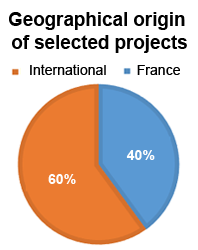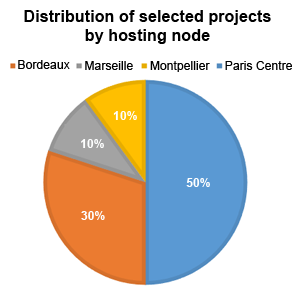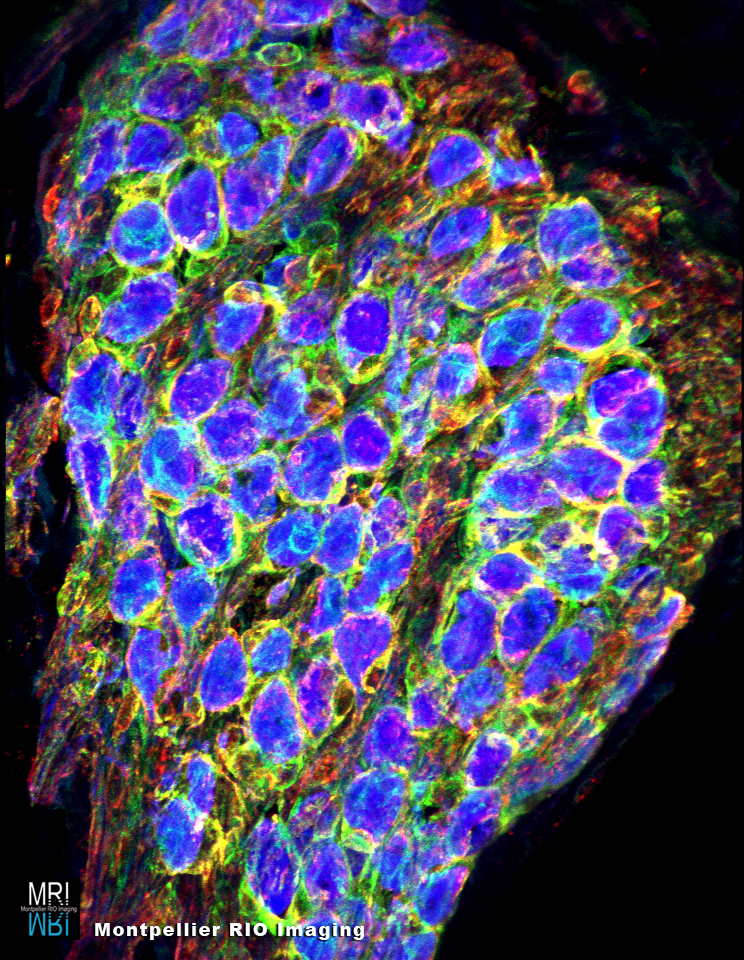Six months appraisal of the calls for projects
After only 6 months of opening, FBI calls for projects are quite successfull and very promising. If the call “Support to events” has already funded more than 40 events since 2012, the two new calls launched in January are also quite successfull; both are available on our Web Access Portal (https://france-bioimaging.org/service-offering/). The first call is meant to enable “User Access” to highly advanced and rare technologies available in FBI infrastructure.  The second one is devoted to “Technological and Methodology Transfer” projects and aims to disseminate emerging approaches and know-how. As a start, on average, France BioImaging has selected and funded two projects of 10 weeks duration per month.
The second one is devoted to “Technological and Methodology Transfer” projects and aims to disseminate emerging approaches and know-how. As a start, on average, France BioImaging has selected and funded two projects of 10 weeks duration per month.
Among the eleven selected projects, 60% were submitted by foreigner colleagues and 40% by French scientists, external to FBI perimeter. Among international projects, two came from North America, two from South America and two from European countries. France BioImaging is proud to attract users from diverse backgrounds and different countries.
The Paris-Center FBI node drains a large number of projects (50%). PICT of the Institut Curie reaches 3 projects submitted by scientists from three different countries.  The Institute Jacques Monod hosted one project and the Photonics lab (Paris-Descarte University) will soon host the last project approved by the Executive Board. Bordeaux Node with the Interdisciplinary Institute of NeuroSciences hosted two projects and the Bordeaux Imaging Center, Jorge Toledo, University of Chile. Until now, other FBI-Nodes were serving external Users at the national level.
The Institute Jacques Monod hosted one project and the Photonics lab (Paris-Descarte University) will soon host the last project approved by the Executive Board. Bordeaux Node with the Interdisciplinary Institute of NeuroSciences hosted two projects and the Bordeaux Imaging Center, Jorge Toledo, University of Chile. Until now, other FBI-Nodes were serving external Users at the national level.
Dissemination of our service offering at the European level, beyond the FBI-Web, through the EuroBioImaging WAP should soon allow a wider promotion of imaging technologies and expertise available on France BioImaging Core Facilities and associated R&D labs.
In conclusion after the first six months of opening calls, we are more than ever motivated to continue on this path of opening state of the art imaging technologies to a broad scientific community in France and worldwide. There is still much to do, but the progress already made and the FBI impact beyond our expectation, encourage us to pursue our work for the future of Biological Imaging.
